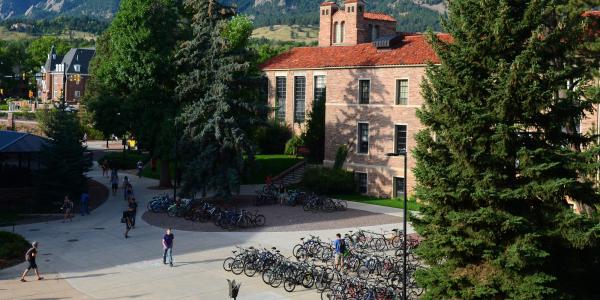CU ɫ������’s efforts to make attaining a college degree easier and more affordable are paying off for students. At Thursday’s regular meeting of the University of Colorado Board of Regents, the board heard an update on student debt and financial aid from CU Vice President and Chief Financial Officer Todd Saliman, highlighting ongoing efforts of the university to reduce the overall cost of attendance and student debt. ����
Up��275 percent
Resident students participating in the CU Promise program*
Up��4 percent
Increase in Pell grant recipients
Up��32 percent
Support for need- and merit-based programs
Down��14.5 percent
Student Debt Tuition and mandatory fees locked over four years
*CU Promise participation has grown from 400 students in 2014 to more than 1,500 students today.
“We have taken several steps in recent years to make attaining a CU degree affordable for students from a variety of backgrounds. For the quality of education and the cost, CU ɫ������ is an excellent value for students,” said CU ɫ������ Chancellor Philip DiStefano.��
Declining student debt
The CU ɫ������ commitment to reducing costs and increasing aid is showing up in the numbers. Ofelia Morales, director of Financial Aid, says that all forms of student debt for Colorado residents have decreased 14.5 percent between the academic years 2012-13 and 2015-16. The CU ɫ������ student loan default rate is 3.1 percent, well below the national 11.3 percent.��
“We attribute this downward trend to a number of factors, including our CU Promise grant program, the Colorado tuition guarantee and an increasing commitment from the university to support need-based and merit-based programs,” said Morales. “We have also increased our commitment to financial literacy to help families explore their best financing options.”
Tuition guarantee
In April 2016, the board approved a tuition and mandatory fees guarantee for undergraduate resident students at CU ɫ������ by a vote of 7-2. Incoming freshmen in the fall of 2018 and 2019 will see a one-time increase of up to 4 percent in their tuition and mandatory fees, which will then remain locked at that rate for four years. The tuition guarantee had previously been in place for non-resident students.
Be ɫ������ Pact
Last month at the State of the Campus Address, Chancellor Philip P. DiStefano announced the Be ɫ������ Pact, eliminating $8.4 million per year in course-related fees, increasing the campus commitment to scholarships and supporting the student government’s efforts to reduce textbook costs.
The more than 60 course and program fees ranged from $1 language fees to more than $1,000 for a graduate clinical program, and will no longer be charged to students beginning fall 2018.
The launch of the Be ɫ������ Pact also formalized the CU ɫ������ Impact Scholarship, which had piloted this fall. The scholarships—worth $14,000 over four years—are awarded to students who demonstrate accomplishments, academic success and persistence based on their socio-economic circumstances.��
Lastly, the university is committing to partner with its student government leaders who are working with the Colorado Department of Education to provide electronic licensed teaching materials to students at an extremely discounted rate, potentially saving them hundreds, if not thousands, of dollars per semester. The ɫ������ campus is offering to invest up to $1 million to pilot this program on its campus.��
Commitment to financial aid
In his report to the board on Nov. 16, Saliman reported an increase in financial aid and Pell grants available to CU students. He also reported low undergraduate debt load for resident-students upon graduation compared with other Colorado four-year institutions.��
Highlights of the report include the following:
- 9.8 percent annual increase in institutional financial aid in fiscal year 2017
- 7.9 percent increase in the Pell-eligible population since 2012 (23 percent of CU ɫ������ students receive Pell grants. Students whose total family income is $50,000 a year or less qualify for the grants.)
- 1 out of every 3 resident undergraduate students receiving financial aid received a Pell grant in fiscal year 2017
- 3.7 percent student loan default rate (8 percentage points lower than the national and Colorado averages)
- 20.6 percent increase in undergraduate degrees awarded to Pell students since 2012
The full presentation can be found on the .


